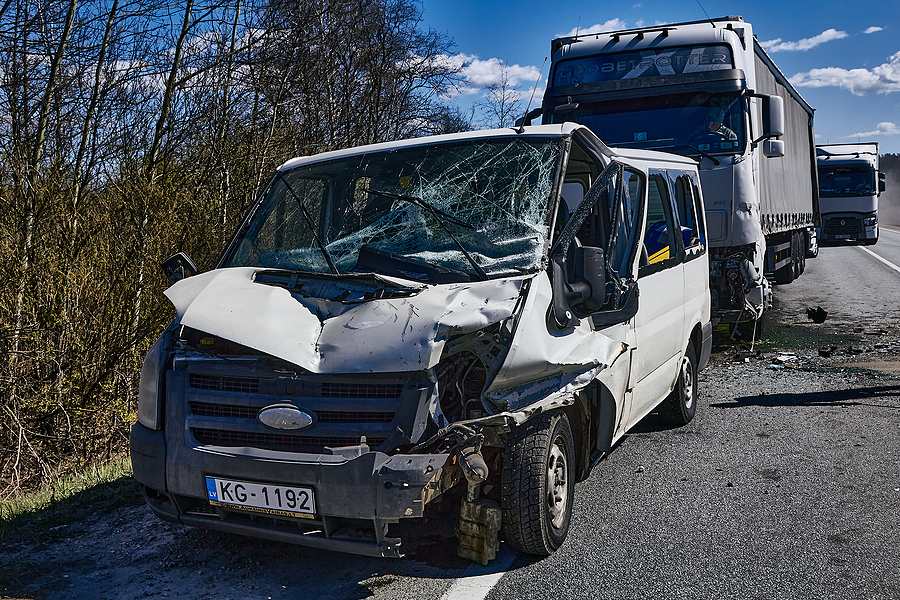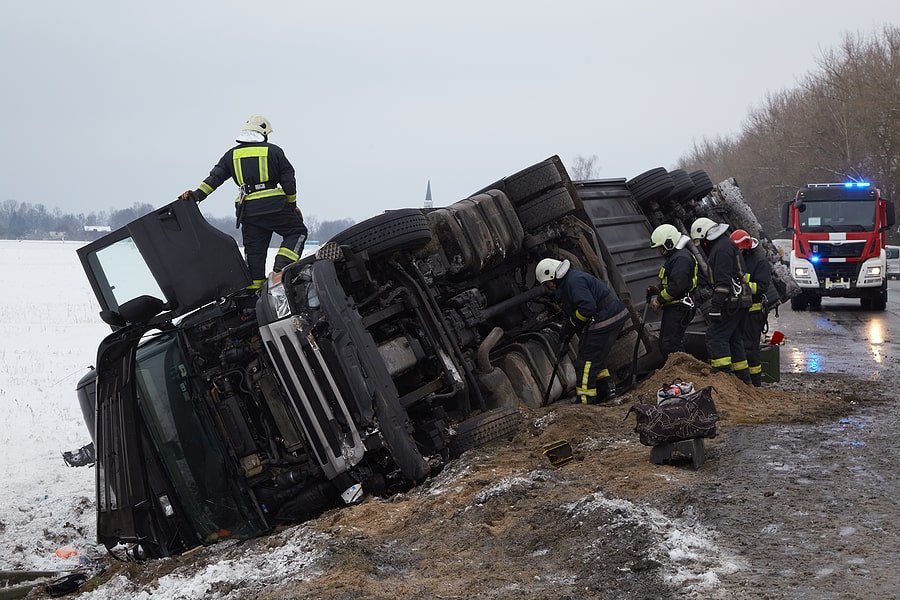Accidents involving big rigs, 18-wheelers, and other heavy commercial vehicles are not just dangerous, they are some of the most severe collisions on our roads. These vehicles, often weighing up to 80,000 pounds when fully loaded, can cause life-altering injuries and extensive property damage when involved in a crash.
Understanding the statistics behind these accidents can help illustrate the magnitude of the problem, especially in New York and on Long Island, where commercial truck traffic is common. The Long Island truck accident lawyers at Rosenberg & Gluck LLP, with their extensive experience in national and New York-specific big rig accidents, are well-equipped to handle such cases.
Our legal team is familiar with the many types of truck accidents and the regulations that govern these vehicles. When a passenger car tangles with a big rig, the results are often catastrophic.
Nationwide Big Rig Accident Statistics
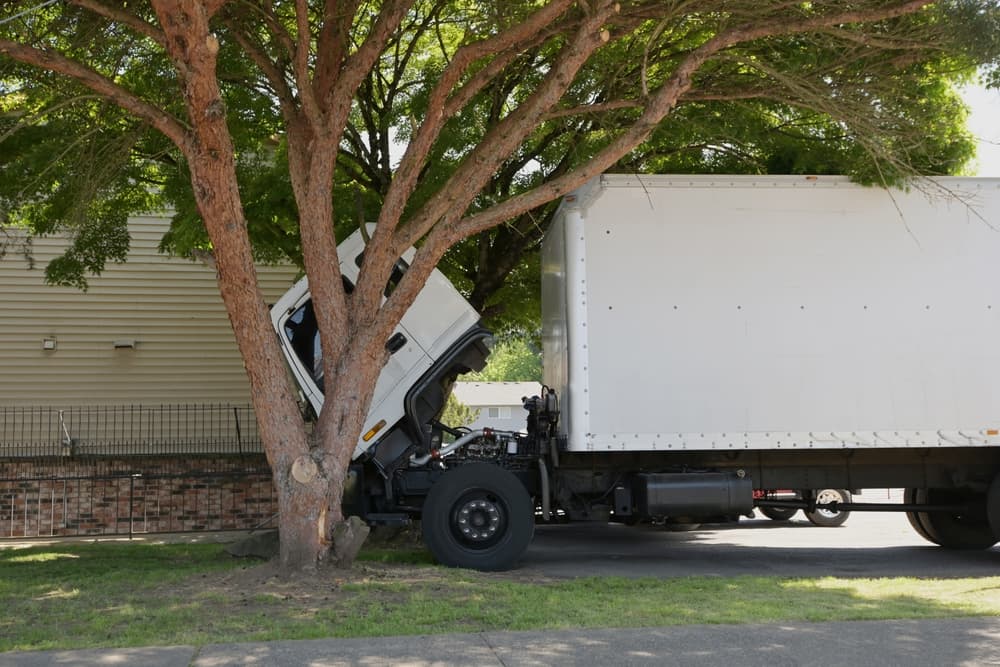
Accidents involving heavy trucks are alarmingly common in the United States. According to the Federal Motor Carrier Safety Administration (FMCSA), in the latest reporting year, 5,904 large trucks were involved in fatal crashes, a 18-percent increase from the previous year. The category includes 18-wheelers and other commercial vehicles. The number of injuries resulting from truck crashes was much higher, with an estimated 119,000 injuries reported in the same year.
Key National Statistics
- There are 13 million trucks registered in the U.S., 2.9 million of which are semi-trucks. In 2022, the trucking industry generated $940.8 billion in gross freight revenue. Approximately 1.86 million companies operate a semi-truck, straight truck, or other hazmat truck.
- In 2021, there were about 494,000 police-reported crashes involving large trucks. Of these, 5,149 (1%) were fatal and 110,000 (22%) resulted in injuries.
- Fatal crashes involving large trucks are more likely to occur in rural areas and on Interstate highways. Specifically, 54% of fatal large truck crashes happened in rural areas, 26% occurred on Interstate highways, and 12% took place on rural Interstate highways.
- Large trucks played a significant role in fatal and injury crashes in work zones. 33% of fatal work zone crashes and 15% of work zone injury crashes involved at least one large truck in 2021.
- In 2021, the United States had 15.51 fatal large truck crashes per million people, a 46% increase from 10.6 in 2010.
- On average, there were 1.12 fatalities per fatal crash involving a large truck in 2021, and in 90% of those crashes, only one person was killed. Notably, 83% of the fatalities were individuals who were not occupants of the large truck.
These figures show the serious risks associated with sharing the road with big rigs, especially given their size and the potential for devastating outcomes when they collide with passenger vehicles.
New York State Big Rig Accident Statistics
New York, with its dense population and vital trucking routes, experiences its share of large truck accidents. In 2021, according to the New York State Department of Motor Vehicles (NYSDMV), there were 11,649 crashes involving large trucks in New York. These crashes resulted in 120 fatalities and 4,603 injuries.
The New York State Comptroller reported that vehicle fatalities rose 25.8% from 2019 to 2022. There were 1,175 traffic fatalities in New York in 2022, the highest number since 2013. In fact, fatalities are at the highest level in a decade.
For comparison, national traffic-related deaths grew by nearly 17%, while New York’s fatalities soared by 25.8% between 2019-2022. In 2022, Long Island led the state in the number of deaths from car crashes (164 in Suffolk and 81 in Nassau).
Large truck and bus crashes accounted for 10% of fatal crashes in the state. Most fatal crashes in New York occurred on a freeway or expressway, followed by collectors (a type of roadway that serves as an intermediary between local streets and major highways or arterials), local roads, and interstate highways.
Interstate highways such as I-495 (the Long Island Expressway) and the region’s many industrial centers make Long Island a key area for commercial truck traffic, contributing to a higher incidence of big rig accidents.
Types of 18-Wheeler Accidents and Their Frequency
Not all big rig accidents are the same. There are several common types of collisions involving 18-wheelers and other large trucks, each posing different risks to drivers and passengers. An experienced personal injury lawyer understands the most common types of these accidents and how and why they occur. This helps your attorney determine liability and build your claim.
Rear-End Collisions
Rear-end accidents are among the most frequent types of big rig crashes. Due to their heavy weight and size, these vehicles require a much longer stopping distance than passenger cars. According to the National Highway Traffic Safety Administration (NHTSA), about 29% of all truck crashes involve rear-end collisions.
Jackknife Accidents
In a jackknife accident, the truck’s trailer swings out from behind the cab at an angle, often leading to multi-vehicle crashes. These accidents typically occur when the truck driver brakes suddenly or loses control on a slick surface. Jackknifing is responsible for 11% of large truck accidents.
Rollover Accidents
Rollovers can be particularly deadly due to the massive size of 18-wheelers. These accidents usually occur when a driver takes a curve too fast or the truck’s load shifts unexpectedly. FMCSA data indicates that 9% of all truck accidents involve rollovers.
Tire Blowouts
Tire blowouts on big rigs can cause a driver to lose control of the vehicle, leading to accidents. According to FMCSA reports, this type of incident is responsible for about 6% of truck crashes.
Underride Accidents
Underride accidents occur when a smaller vehicle slides under the trailer of a big rig, usually resulting in severe injuries or fatalities. These are less common but incredibly dangerous, making up approximately 3% of truck accidents.
Wide Turn Accidents
When trucks make wide turns, especially in urban areas, they may swing into adjacent lanes, colliding with other vehicles. This type of accident is responsible for 5% of big rig crashes.
Trucking Regulations: Federal and New York State Laws
Accidents involving big rigs are subject to both federal and state regulations. Your truck accident attorney must be familiar with these laws when pursuing a claim after a trucking accident.
Federal Regulations
The FMCSA oversees trucking safety on a national level, implementing regulations that truck drivers and companies must follow. Some key rules include:
- Hours of Service (HOS) Regulations: These rules limit how long truck drivers can be on the road without taking a break. Drivers are restricted to 11 hours of driving after 10 consecutive hours off duty, with a 14-hour “on-duty” limit.
- Weight Limits: Trucks are restricted to a maximum weight of 80,000 pounds for vehicles and cargo combined.
- Maintenance Requirements: Federal law mandates regular inspections and maintenance for commercial trucks to ensure they are roadworthy.
New York State Regulations
In addition to federal regulations, New York imposes its own rules on truckers:
- State Weight Limits: While the federal limit is 80,000 pounds, New York has specific weight regulations for trucks depending on the type of roadway.
- Truck Routes: In New York City, certain streets are restricted for use by trucks. Trucks are also prohibited from parkways like the Long Island Parkway, where overpasses are too low for large trucks.
- Insurance Requirements: New York mandates higher insurance limits for commercial vehicles, meaning truck drivers and companies are required to carry adequate coverage in case of accidents.
Trucking companies and drivers who violate these laws may be held liable for accidents caused by their negligence. An attorney familiar with both federal and state trucking laws, like the team at Rosenberg & Gluck LLP, can make a significant difference in recovering compensation.
Types of Heavy Trucks and Their Role in Accidents
The term “big rig” typically refers to 18-wheelers, but several other types of large commercial vehicles also fall into this category. Different types of trucks carry different risks, and each type has a varying impact on traffic.
18-Wheelers
These trucks make up a large portion of commercial traffic and are involved in the majority of fatal truck accidents nationwide. The sheer size and weight of these vehicles make them particularly dangerous in crashes.
Double Trucks
Double trucks (also called doubles or tandem trucks) are combinations of 18-wheelers where two trailers are hooked together and pulled by a single tractor. These trucks are longer than standard 18-wheelers and are often used to transport large quantities of goods across long distances. Doubles are commonly used in industries like shipping and logistics due to their efficiency in carrying more cargo in one trip.
According to various FMCSA studies, double-trailer combinations account for about 2-3% of all large truck crashes. While these percentages are lower compared to standard tractor-trailers, accidents involving doubles often result in more significant damage and can be more challenging for other drivers to navigate around due to their size.
In New York, double trucks are restricted to designated roadways, primarily interstate highways, and some New York State Thruway routes. They are typically not allowed on local roads, parkways, or routes with low-clearance overpasses (like many on Long Island).
Box Trucks
Box trucks, also known as straight trucks, are smaller than 18-wheelers but still large enough to cause serious damage in a collision. These trucks are commonly used for deliveries and are involved in 10-12% of truck accidents, according to the FMCSA.
Dump Trucks
Dump trucks, which are commonly used in construction, are responsible for 4-5% of large truck accidents. These trucks often carry loose material, making them prone to rollovers and load spills.
Tanker Trucks
Tanker trucks, used to transport liquids such as gasoline or chemicals, are especially dangerous in accidents due to the potential for hazardous spills. Tankers are involved in about 3-4% of truck crashes.
Investigating a Big-Rig Crash
Investigating a big-rig (or 18-wheeler) accident is different from typical car accident investigations for several reasons due to the complexity and specific factors involved. Here are the key elements that make investigating a big-rig accident unique:
Regulatory Compliance
As mentioned earlier, big rig drivers and trucking companies must comply with numerous federal and state regulations, including those set by the FMCSA.
Multiple Parties Involved
Unlike a standard car accident, a big-rig accident may involve multiple liable parties, including:
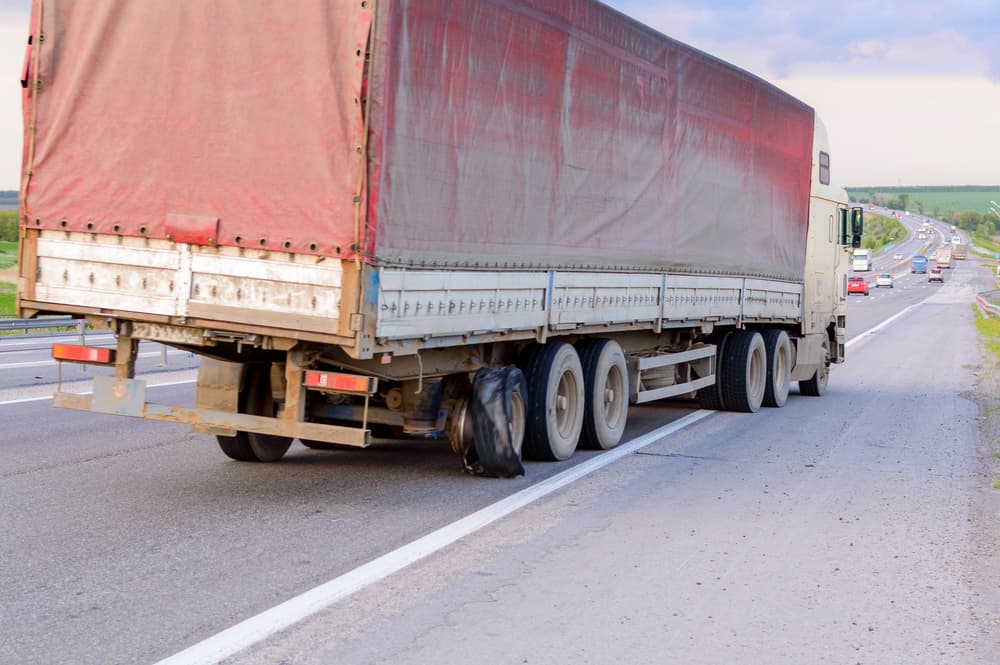
- The truck driver.
- The trucking company.
- The cargo loading company.
- Manufacturers of truck parts (in the case of mechanical failure).
A personal injury lawyer handling a truck accident claim will investigate each party’s role in the accident. This requires identifying how their actions may have contributed to the crash.
Commercial Insurance Companies
Commercial insurance policies often cover big rigs with high liability limits. These insurance companies tend to aggressively defend against claims, and the investigation must account for their involvement from the outset, as they may deploy their own investigators to the scene almost immediately.
Black Box Data
Most big rigs are equipped with an electronic logging device (ELD) or black box, which records crucial data such as:
- Speed at the time of the crash.
- Brake usage.
- Engine performance.
- Hours the driver has been on duty.
This data can be critical to understanding the cause of the accident, and it is essential to secure it early in the investigation.
Accident Reconstruction
Given the size, weight, and complexity of 18-wheelers, accident reconstruction is often necessary to fully understand how the crash occurred. This can involve:
- Analyzing skid marks, vehicle damage, and road conditions.
- Using experts to model the accident dynamics, such as braking distance, load shifts, or trailer swing.
Cargo Investigation
What the truck was carrying can play a role in the accident. Investigators need to determine whether the cargo was properly loaded and secured and whether overloading or shifting loads contributed to the crash.
Higher Levels of Damage
Big-rig accidents often involve significant damage due to the truck’s size and weight. The investigation needs to account for the extent of injuries and property damage, which can be much more severe than in a car accident.
Expert Testimony
Due to the technical aspects involved in a big-rig accident investigation, experts in fields like trucking safety, vehicle mechanics, and accident reconstruction are often needed to explain complex issues in court or during settlement negotiations.
Preserving Evidence
Because trucking companies and insurers may quickly move to protect their interests, investigators representing the injured party need to act fast to preserve evidence, such as vehicle damage, black box data, and driver logs, which may otherwise be lost or altered.
How Rosenberg & Gluck LLP Can Help After a Big Rig Accident
If you’ve been involved in a big rig accident on Long Island, you need a legal team that understands the complexities of these cases and is well-versed in both federal and New York state trucking laws. At Rosenberg & Gluck LLP, our Long Island personal injury lawyers have extensive experience helping truck accident victims recover compensation for medical expenses, lost wages, pain and suffering, and more.
We know how challenging it can be to take on large trucking companies and their insurers, who often employ aggressive tactics to minimize payouts. That’s why we focus on protecting your rights and ensuring you receive full compensation for your injuries.
Our team is local and accessible, meaning we’re always here when you need us. We deeply understand New York laws and can confidently navigate your case’s legal complexities. Contact us today for a free consultation. Call our Long Island office at 631-451-7900 or contact us online. We serve Suffolk County, Nassau County, and the Boroughs.
